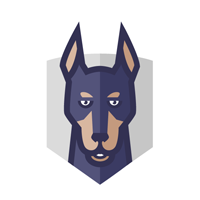Containers are at the heart of modern application development, which has also made them a key target for hackers. That makes container security an increasingly important focus of cybersecurity teams.
Fortunately, there are tools that can help make the job of protecting containers easier. Here we’ll discuss the best container security tools, including their standout features, pricing and more, followed by some general advice for container security buyers.
- Alert Logic: Best for Real-time Threat Detection and Incident Response
- Anchore: Best for Container Image Vulnerability Management
- Aqua Security: Best for Comprehensive Container Security
- Palo Alto Networks Prisma Cloud: Best for Cloud-Native Security
- Portainer: Best for User-Friendly Container Management
- Qualys: Best for Compliance and Vulnerability Management
- Red Hat Advanced Cluster Security: Best for Kubernetes-Native Security
- SUSE Rancher: Best for Multi-Cluster Kubernetes Management
- Sysdig Secure: Best Overall
- Snyk: Best for Developer-Centric Security
Featured PartnersFeatured Partners: Container Security Software
eSecurity Planet may receive a commission from merchants for referrals from this website
Top Container & Kubernetes Security Solutions Comparison
From threat detection to pricing, this comparison provides insights to help you make an informed choice for your organization’s security needs.
| Threat Detection | Incident Response | Compliance | Integration | Pricing | |
|---|---|---|---|---|---|
| Alert Logic | Yes | Yes | Yes | SIEM, Cloud | Starts at $31,800 per year |
| Anchore | Yes | Yes | Yes | CI/CD, Registry | Anchore requires a custom quote request. |
| Aqua Security | Yes | Yes | Yes | CI/CD, SIEM | AWS’ standard plan is priced $50,000 per year. Custom quotes are available upon request. |
| Palo Alto Networks Prisma Cloud | Yes | Yes | Yes | CI/CD, SIEM | Business Edition starts at $9,000/year from AWS. Custom quotes from the vendor are available upon request. |
| Portainer | Limited | Limited | Yes | Container Orchestration | Business edition package starts at $149 per user per year. |
| Qualys | Yes | Yes | Yes | SIEM, Cloud | Starts at $995 per host per annual subscription. |
| Red Hat Advanced Cluster Security | Yes | Yes | Yes | Kubernetes Native | Starts at $500 per year per instance. |
| SUSE Rancher | Yes | Yes | Yes | Kubernetes Native | Starting price is $7,594.99 per year up to 500 nodes. |
| Sysdig Secure | Yes | Yes | Yes | CI/CD, SIEM | Custom quotes from the vendor are available upon request. |
| Snyk | Yes | Yes | Limited | CI/CD, IDE | Free for individual users; $52 for teams; and custom price for enterprise. |
Jump ahead to:
- Key features of container & Kubernetes security solutions
- Benefits of working with container & Kubernetes security solutions
- How do I choose the best container & Kubernetes security solutions for my business?
- Frequently Asked Questions (FAQ)
Featured PartnersFeatured Container Security Software
eSecurity Planet may receive a commission from merchants for referrals from this website

Alert Logic
Best for Real-time Threat Detection and Incident Response
Acquired by Fortra, Alert Logic is a managed detection and response (MDR) provider that secures public cloud, SaaS, on-premises, and hybrid cloud environments. It provides a view of targeted vulnerabilities or configurations within containerized environments by collecting and analyzing logs and the network traffic to, from, and between containers. Users know within minutes if exploits are actively targeting their container environment, if they were successful, which containers are compromised, and how to respond.
Pricing
- Professional subscription starts at $31,800 per year.
- Customized pricing can be requested through Alert Logic’s website.
Features
- Detects cyberattacks in real-time by analyzing the signature of data packets as they traverse containerized environments
- Collect, aggregate, and search container application logs to gain insight into container activity
- Build a better view of security impacts with a graphical representation of the compromised container and its relationships
- Get proactive notifications from security experts when suspicious activity occurs
- Single integrated solution to protect all workloads — whether in a container or not
- Support for AWS, Azure, Google Cloud Platform, hybrid, and on-premises environments
- Addresses any workload in any container environment (Docker, Kubernetes, Elastic Beanstalk, Elastic Container Service, CoreOS, and AWS Fargate)
- Helps meet regulatory requirements, including PCI DSS, HIPAA HITECH, GDPR, Sarbanes-Oxley (SOX), SOC 2, NIST 800-171 and 800-53, ISO 27001, and COBIT
Pros
- Provides real-time visibility into containerized environments and excels at threat detection.
- Provides powerful incident response capabilities, allowing companies to respond quickly to security situations.
- Assists in adhering to different industry standards and requirements.
- Integrates seamlessly with SIEM and cloud systems for unified security management.
Cons
- The wide range of features can make it difficult to set up and manage, requiring expert assistance and employees.
- Comprehensive security can come at a cost, and this may be too expensive for small businesses.

Anchore
Best for Container Image Vulnerability Management
Anchore offers products that enable organizations to scan and inspect public and private container images. At the core is an open-source engine to scan images and achieve security compliance. Deployments of container-based infrastructure include a container registry where images are stored. Anchore scans the contents of container registries to ensure they are free from vulnerabilities and comply with security policies.
Pricing
- Contact Anchore for pricing information.
Features
- Software supply chain management built with the software bill of materials (SBOM) to identify upstream dependencies in source code repositories and monitor for SBOM drift that can indicate malware or compromised software
- Automatically generate SBOMs for all software produced and verify SBOMs for software consumed (both open source and proprietary)
- Use SBOM data to continuously assess security and compliance risks before and after deployment
- Continuously monitor software applications for new or zero-day vulnerabilities that arise
- Extends scanning for dependencies to include source code repositories in addition to support for container scanning through CI/CD, registries, or Kubernetes
- Container registries include Harbor, Quay, JFrog, and DockerHub as well as offerings from AWS, Azure, and Google
- Reports and evaluations can be accessed using the command-line interface (CLI) or Anchore Enterprise UI, and webhooks can trigger action in other systems
- Open-source tools for image inspection and vulnerability scanning perform analysis of container workloads
- Ensures no secrets are present in images such as passwords and API keys
- Identifies non-OS third-party libraries, including Node.js NPM, Ruby GEM, Python PIP, DotNet, and Java archives
Pros
- Performs vulnerability management well, providing in-depth knowledge of container image security.
- Effective incident response capabilities are provided to quickly mitigate security risks.
- Assists in maintaining conformity with industry requirements.
- Integrates with CI/CD workflows and container registries smoothly.
Cons
- While it excels in vulnerability management, it may not provide as much real-time threat detection compared to other solutions.
- Initial setup and implementation can require a learning curve.
See the Best Cloud, Container and Data Lake Vulnerability Scanning Tools

Aqua Security
Best for Comprehensive Container Security
Aqua Security is an early pioneer of the container security space. It scans container images based on a stream of aggregate sources of vulnerability data, including Common Vulnerabilities and Exposures (CVEs), vendor advisories, and proprietary research, which ensures up-to-date coverage while minimizing false positives. Additionally, it can find malware, embedded secrets, operational support system (OSS) licenses, and configuration issues in images.
Pricing
- Aqua Platform Shift Left Standard Plan is priced at $50,000 per year from AWS Marketplace.
- Contact AquaSec for custom quotations.
Features
- Kubernetes Security Posture Management (KSPM) and Kubernetes runtime protection provide policy-driven life cycle protection and compliance for K8s applications
- Dynamic map of running K8s clusters that highlights and rates Kubernetes security risks
- Real-time visibility into namespaces, deployments, nodes (hosts), containers and the images they came from, as well as network connections between and within namespaces
- Powered by Open Policy Agent (OPA), new Kubernetes Assurance Policies apply dozens of rules or add custom rules using Rego expressions
- Works in conjunction with Aqua’s Image Assurance Policies to prevent the deployment of unsafe and non-compliant workloads
- Discover malware hidden in open source packages and third-party images, preventing attacks on container-based applications
- Analyzes images before they arrive in a secure isolated sandboxed environment, examining and tracing behavioral anomalies
- Static and dynamic scanning to create flexible image assurance policies that determine which images would be allowed to progress through the development pipeline and run in clusters or hosts
Pros
- Features strong threat detection, vulnerability management, and compliance.
- Effective incident response capabilities, including runtime protection, are provided.
- Works nicely with a variety of CI/CD tools and SIEM systems.
- Well-known for its user-friendly interface and simplicity of usage.
Cons
- Can be costly for smaller organizations.
- A significant amount of resources may be required, affecting application performance.
Also read: 8 Container Security Best Practices & Tips

Palo Alto Networks Prisma Cloud
Best for Cloud-Native Security
Palo Alto Networks acquired container security firms Twistlock and Aporeto and has incorporated their features into its Prisma Cloud application. As a larger suite of cloud-based functions, Prisma Cloud is a cloud-native security platform with security and compliance coverage for users, applications, data, and the cloud technology stack.
Pricing
- Prisma Cloud Business Edition plan starts at $9,000 per year from AWS Marketplace.
- Contact Palo Alto Networks for custom quotation or free trial requests.
Features
- Scans container images and enforces policies as part of CI/CD workflows
- Continuously monitors code in repositories and registries
- Secures both managed and unmanaged runtime environments
- Combines risk prioritization with runtime protection at scale
- Support for public and private clouds
- Single console for managed and unmanaged environments
- Full life cycle security for repositories, images, and containers
- Aggregates and prioritizes vulnerabilities continuously in CI/CD pipelines and containers running on hosts or on containers as a service
Pros
- Offers excellent threat detection, utilizing machine learning to spot abnormalities.
- Provides powerful incident response and compliance capabilities.
- Integrates with CI/CD pipelines and SIEM systems smoothly.
- It is appropriate for both small-scale and large-scale deployments.
Cons
- For small businesses, the extensive feature set might be too expensive.
- Deployment and implementation may necessitate further assistance or expert knowledge.
See the Best Cloud Native Application Protection Platforms (CNAPP)

Portainer
Best for User-Friendly Container Management
Portainer is a lightweight container management platform designed to make Docker and Kubernetes deployment and orchestration easier. Portainer is built with simplicity in mind, and it has an easy-to-use graphical interface, making it a perfect solution for organizations wishing to optimize container operations without the complexities of standard management systems.
Pricing
- Business edition package starts at $149 per user per year.
- For add-ons and custom quotations, contact Portainer.io.
Features
- Backs up and restores container settings and data.
- Users may manage and deploy containers from their preferred registry sources by integrating with external container registries.
- It has a lightweight architecture that is resource-efficient and is appropriate for smaller teams and environments.
- Graphical user interface is simple to use.
- Provides basic container orchestration features, reducing the complexity of container deployment and scalability.
- Basic monitoring and metrics for containerized applications are provided.
- Offers both a free Community Edition with basic features and an Enterprise Edition with greater capabilities and support.
- Role-Based Access Control (RBAC) capability is available, allowing businesses to create roles and permissions for various people or teams.
- Pre-defined templates for widely used container services are provided, easing the deployment process for applications such as databases, web servers, and other uses.
- Supports a variety of container systems, including Docker and Kubernetes.
Pros
- The simplicity and straightforward design of Portainer makes it appropriate for users of all skill levels.
- Solution is both lightweight and resource-efficient.
- Provides a low-cost container management solution.
- For smaller deployments, basic container orchestration features are offered.
Cons
- It may be lacking in sophisticated security capabilities needed in more complex environments.
- Capabilities for compliance management are basic.

Qualys
Best for Compliance and Vulnerability Management
Qualys Container Security offers visibility into container host security as well as the ability to detect and prevent security breaches during runtime. It gathers images, image registries, and containers spun from images. It also helps to determine if images are cached on different hosts, and identifies containers on exposed network ports running with privileges.
Pricing
- Starts at $995 per host per annual subscription.
Features
- Secures containers whether on-premises or in the cloud.
- Enforces policies to block the use of images that have specific vulnerabilities or that have vulnerabilities above a certain severity threshold.
- Offers vulnerability detection and remediation in the DevOps pipeline by deploying plugins like Jenkins or Bamboo or via REST APIs.
- Search for images that have high-severity vulnerabilities, unapproved packages, and older or test release tags.
- Container Runtime Security (CRS) offers visibility into running containers as well as the ability to enforce policies that govern behavior.
- Include centralized discovery and tracking for containers and images.
- Can analyze metadata for containers and images including labels, tags, installed software, and layers.
Pros
- Excels in vulnerability management, with extensive scanning and assessment capabilities for identifying vulnerabilities in both hosts and apps.
- Maintains compliance with a range of industry standards and laws, such as PCI DSS, HIPAA, and GDPR.
- Integrates well with SIEM systems and cloud platforms, allowing security operations to be streamlined.
- Suitable for all types of companies, from small businesses to major corporations.
Cons
- Its incident response and forensics capabilities may be less robust compared to competing solutions.
- Qualys’ extensive feature set can make it very expensive, making it unsuitable for smaller enterprises with limited resources.

Red Hat Advanced Cluster Security
Best for Kubernetes-Native Security
Red Hat Advanced Cluster Security, originally known as StackRox, is a container security technology that runs on Kubernetes. It is intended for use in Kubernetes deployments to protect containerized applications and microservices. RHACS offers a complete set of security features that are adapted to the dynamic nature of containers and orchestration, ensuring that applications are safe throughout their lifespan.
Pricing
- Pricing starts at $500 a year per instance.
Features
- The StackRox project is now the open-source code behind Red Hat Advanced Cluster Security for Kubernetes.
- Kubernetes-native architecture uses declarative data and built-in controls for richer context, native enforcement, and continuous hardening.
- Leverages the controls built into Kubernetes for policy enforcement, avoiding the operational risks of applying third-party in-line proxying or blocking tools.
- Applies intelligence from runtime behavior to adjust subsequent builds and deployments to continuously monitor and shrink the attack surface.
- Reduces the time and effort needed to implement security and streamlines security analysis, investigation, and remediation using Kubernetes context.
- Provides scalability and resiliency native to Kubernetes, avoiding operational conflict and complexity that can result from out-of-band security controls.
Pros
- Specifically designed for Kubernetes environments.
- Provides real-time insights into container activity, detecting abnormalities and vulnerabilities.
- Robust vulnerability management for container images and runtime.
- Suitable for both modest and large-scale Kubernetes installations.
- Offers runtime protection and event response capabilities.
- Security rules may be defined and enforced across Kubernetes clusters.
Cons
- Red Hat Advanced Cluster Security is primarily intended for Kubernetes settings and may not be appropriate for enterprises that use other container orchestration technologies.
- RHACS pricing may not be competitive for enterprises that are not already in Red Hat’s ecosystem.

SUSE Rancher
Best for Multi-Cluster Kubernetes Management
Formerly NeuVector, SUSE Rancher provides life cycle container security from DevOps pipeline vulnerability protection to automated security and compliance in production. In addition, Rancher includes centralized authentication, role-based access control (RBAC), and Center for Internet Security (CIS) benchmarking.
While the details of the integration are still unclear, SUSE said, “NeuVector will be positioned as a core pillar of a new cloud-native, open-source security effort based on best practices, guidance, and reference architectures within the movement toward zero-trust security adoption.”
Pricing
- Price starts at $7,594.99 per year for up to 500 nodes.
Features
- NeuVector can be deployed through the Rancher catalog.
- Pushes security capabilities across the entire cloud-native footprint.
- Ensures container security using network inspection.
- Supports the full range of Kubernetes management products in addition to Rancher, including OpenShift, Mirantis, and Tanzu.
- Scans for vulnerabilities during the entire CI/CD pipeline.
- Uses the Jenkins plug-in to scan during build, monitor images in registries, and run automated tests for security compliance.
- Prevents deployment of vulnerable images with admission control, and monitors production containers.
- Deploys as a container onto virtual machines or bare metal OS environments.
- Offers a Layer 7 container firewall.
Pros
- Designed for Kubernetes settings, allowing native Kubernetes cluster integration and administration.
- Strong threat detection, vulnerability management, and compliance tools are included.
- Suitable for all types of companies, from small teams to large-scale Kubernetes installations.
- Rancher’s user-friendly design makes it suitable for users of varied skill levels.
- Users may manage numerous Kubernetes clusters using a centralized interface.
- Provides a portfolio of pre-configured apps, making deployment easier.
- Role-based access control (RBAC) is provided for security and governance.
- Easily integrates with CI/CD technologies for automated application delivery.
Cons
- SUSE Rancher is designed primarily for Kubernetes settings and may not be appropriate for enterprises that use other container orchestration technologies.
- Rancher setup and management may require a learning curve.

Snyk
Best for Developer-Centric Security
Snyk is all about finding and automatically fixing vulnerabilities in code, open-source dependencies, containers, and infrastructure as code (IaC). The company’s security intelligence software can automate base image remediation and helps developers prioritize vulnerabilities.
Pricing
- Free for individual users
- $52 for team plan
- Enterprise plan’s custom price can be requested directly from Snyk.
Features
- Scales security capabilities by enabling developers to upgrade to a more secure base image or rebuilding when the base image is outdated.
- Focuses attention on the highest priority issues instead of addressing them individually.
- Uses risk signals like exploit maturity and insecure workload configuration to help teams cut through the typical noise of container vulnerability reports.
- Detects and monitors open-source dependencies as part of the container scan.
- Detects vulnerable dependencies during coding to avoid future fixing efforts and save development time.
- Scans pull requests before merging.
- Tests projects directly from the repository and monitors them daily for new vulnerabilities.
- Prevents new vulnerabilities from passing through the build process by adding an automated Snyk test to the CI/CD.
Pros
- Excels in vulnerability management, revealing security flaws in code, dependencies, and container images.
- Early in the development process, it provides developers with actionable security information, supporting secure coding habits.
- Integrates seamlessly with CI/CD pipelines, IDEs, and container registries, making it simple to add security checks into development workflows.
- Its vulnerability management capabilities are extended to containerized programs and images.
- Provides advisory information and patch recommendations to assist developers in effectively addressing issues.
- Supports several programming languages and frameworks.
Cons
- Although it is accessible, it may lack full compliance management tools when compared to other security systems.
- Snyk’s real-time threat detection capabilities, while excellent in vulnerability management, are not as robust as specialist threat detection solutions.

Sysdig Secure
Best Overall
Sysdig Secure is a software-as-a-service (SaaS) platform that provides unified security across containers and cloud environments. DevOps and security teams can use it to reduce risk with visibility across containers, hosts, Kubernetes, and the cloud. It can detect and respond to threats and validate cloud posture and compliance. Additionally, it can maximize performance and availability by monitoring and troubleshooting cloud infrastructure and services.
Pricing
- Pricing information can be requested directly from Sysdig.
Features
- A new Drift Control feature helps teams detect, prevent, and speed up incident response for containers that were modified in production, also known as container drift.
- Malware and cryptomining detection with threat intelligence feeds from Proofpoint Emerging Threats (ET) Intelligence and the Sysdig Threat Research Team.
- Digs directly into compromised or suspicious containers with on-demand secured shell access and investigates the blocked executable and communications.
- Automates scanning locally in continuous integration and continuous deployment (CI/CD) pipelines and registries without images leaving the environment.
- Visualizes network communication between pods, services, and applications inside Kubernetes.
- Conducts incident response using granular data with Kubernetes and cloud context and forwards events to SIEM tools like Splunk, QRadar, AWS Security Hub.
- Continuously validates cloud security posture and meets compliance standards (e.g., NIST 800-53, SOC2, and PCI) and internal mandates.
Pros
- Robust container-specific threat detection, vulnerability management, and compliance features
- Capabilities for real-time incident response, including runtime protection and forensic analysis
- Integrates seamlessly with CI/CD pipelines and SIEM systems for centralized security management
- Interface that is simple to use
- Suitable for both modest and large-scale container deployments
- Container and Kubernetes native
- Runtime protection features to detect and respond to threats during container execution
- Good support
Cons
- Sysdig Secure’s broad feature set may be a bit costly, which may be a limiting issue for smaller enterprises with limited resources.
- Sysdig Secure may need significant resources depending on the volume of container deployment, significantly compromising application performance.
Also read:
7 Key Features of Container & Kubernetes Security Solutions
These key features are integral to a container and Kubernetes solution because they jointly improve the security posture of containerized applications, assist enterprises in maintaining compliance, and allow for the quick identification and mitigation of security risks. Container security tools encompass a wide range of controls, but they should cover the majority of the following:
1. Image scanning
Image scanning aids in identifying vulnerabilities and security hazards in container images prior to deployment. This method guarantees that only safe and compliant images are utilized in production, lowering the risk of exploitation while also maintaining the integrity of your application stack.
2. Runtime security
Runtime security is critical for real-time monitoring of containers and Kubernetes clusters. It identifies and responds to risks and vulnerabilities that may develop during runtime, assisting in the protection of your applications from attacks and unauthorized access even after they have been deployed.
3. Threat detection and vulnerability scanning
Continuous monitoring of your infrastructure and apps requires threat detection and vulnerability screening. Identifying and responding to potential threats and vulnerabilities as soon as possible can help to avoid wider security breaches and data leaks.
4. Network security
By regulating traffic between containers and external systems, network security controls protect containerized applications. This improves overall security by isolating apps, restricting unwanted access, and preventing lateral movement within a Kubernetes cluster.
5. Incident response and forensics
Forensics and incident response capabilities are critical for analyzing security events and breaches. They allow your team to comprehend the nature of an incident, take corrective steps, and prevent such events in the future.
6. Compliance
Compliance controls and reporting and auditing features help your containerized applications comply with security and data privacy regulations. This is especially important in businesses with stringent regulations, such as healthcare (HIPAA), finance (PCI DSS), or data privacy (GDPR), where noncompliance can result in serious legal and financial implications.
7. Integration with DevOps and SIEM tools
Integration with DevOps tools automates security inspections and policy enforcement across the development and deployment process. Integration with SIEM solutions helps ensure that security events are centrally documented, evaluated, and connected with other system data, resulting in greater visibility and faster incident response.
5 Benefits of Container & Kubernetes Security Solutions
- Container and Kubernetes security solutions offer advanced threat detection, vulnerability management, and access control, helping enterprises in identifying and mitigating security threats in their containerized environments, which is critical for protecting sensitive data and ensuring application integrity.
- They are built to scale with your containerized workloads, ensuring that security protections stay effective as your infrastructure grows.
- These solutions help firms maintain compliance with industry regulations and standards by automating compliance checks and providing documentation and reporting capabilities, thereby decreasing the time and effort involved with compliance audits.
- Container and kubernetes security solutions provide extensive insight into container operations, enabling enterprises to monitor container activity in real-time and respond to security issues quickly, hence improving overall security posture.
- These technologies promote DevSecOps techniques by integrating security into the development pipeline, allowing teams to detect and repair security vulnerabilities early in the development process.
How to Choose the Best Container & Kubernetes Security Solutions for Your Business
Selecting a container and Kubernetes security solution should be based on an organization’s unique requirements, budget, and the demand of containerized workloads.
For Small-Sized Businesses:
- Cost-effectiveness: Because small enterprises sometimes have limited finances, cost-effectiveness is critical. Look for options that provide the security you need without breaking the bank.
- Usefulness: Small teams may lack all the necessary security expertise. Choose systems with simple setup processes and user-friendly interfaces to shorten the learning curve.
- Lightweight: Choose resource-efficient solutions to avoid interfering with the performance of limited infrastructure.
- Security features: Focus on solutions that provide critical security capabilities such as vulnerability scanning and compliance checks to meet basic security requirements.
- Support and community: Look for solutions that have active user communities or low-cost support services to help in the event of an issue.
For Medium-Sized Businesses:
- Scalability: Medium-sized enterprises should choose solutions that can expand along with their containerized environments, assuring long-term appropriateness.
- Comprehensive security: Look for systems that provide a greater variety of security capabilities, including real-time threat detection, incident response, and comprehensive visibility into container activities.
- Compliance: Consider solutions that streamline compliance monitoring and reporting, allowing you to satisfy regulatory obligations more efficiently.
- Integration: To establish a coherent security environment, prioritize solutions that connect smoothly with current technologies like CI/CD pipelines, container registries, and SIEM systems.
- Support and training: To properly handle complicated container security concerns, medium-sized enterprises may require more extensive support choices and training resources.
For Large-Sized Businesses:
- Enterprise-grade security: Large companies should invest in complete security systems that include sophisticated threat detection, robust incident response, and improved access control.
- Customization: Look for systems that provide customized security rules and fine-grained access and security controls to fit the organization’s particular demands and compliance requirements.
- Scalability and performance: Prioritize solutions that can manage huge volumes of container traffic in large-scale deployments without sacrificing performance.
- Comprehensive compliance: Complex compliance obligations require systems with strong compliance management and reporting capabilities.
- Integration and orchestration: Ensure that the chosen solution can integrate with a variety of technologies and orchestration platforms to handle complicated infrastructure setups.
- Dedicated Support: Large businesses may require premium support services such as 24/7 help and dedicated account management.
How We Evaluated Container & Kubernetes Security Solutions
We analyzed a range of critical factors in evaluating container and Kubernetes solutions and scored each product in a rubric to come up with the best container security products. Our evaluation criteria included the following fundamental factors:
Price/Value (20%)
We examined the cost-effectiveness of each solution, taking into consideration variables like relative value, pricing transparency, free trials, and open-source possibilities.
Core Features (30%)
We examined image scanning capabilities, runtime security measures, threat detection, vulnerability scanning, network security, incident response and forensics capabilities, compliance adherence, and integration capabilities with DevOps and SIEM technologies.
Non-Core Features (10%)
We evaluated less common features such as access control, logging and auditing capabilities, scalability, and the potential to reduce false alerts.
Ease of Use and Implementation (25%)
We evaluated each solution’s user-friendliness, taking into account elements such as simplicity of administration, availability of knowledge base/resources, technical competence necessary for setup, and the intuitiveness of the user interface.
Support (15%)
Lastly, we assessed the support ecosystem, which includes customer service channels (such as live chat and email), manuals, demos, and training materials.
Frequently Asked Questions (FAQs)
These are some common questions buyers have when evaluating container security tools:
Can container security tools impact performance or slow down my containerized applications?
Yes, container security solutions can impact performance and even slow down containerized apps. Increased resource consumption, scanning overhead during image builds or runtime checks, real-time monitoring procedures, and misconfigured security rules that result in false positives or superfluous security checks can all have an impact. These performance difficulties, however, may be mitigated by careful setup, resource allocation, and the use of lightweight security technologies.
Can container security tools work in hybrid or multi-cloud environments?
Yes, container security tools can be used in hybrid or multi-cloud systems. Many container security solutions are cloud-agnostic and can connect smoothly with container orchestration systems from many cloud providers, guaranteeing similar security rules and threat detection capabilities independent of the cloud architecture used. This adaptability enables businesses to maintain security and compliance across many cloud environments and on-premises data centers.
What criteria should I consider when evaluating container security tools?
Different container security tools can be compared by evaluating key features such as compatibility with your cloud infrastructure, vulnerability management, threat detection, compliance, integration, resource efficiency, customization capabilities, scalability, user-friendly interface, support and documentation, and cost.
Bottom Line: Choose the Right Kubernetes Security Solution
Container and Kubernetes security solutions are essential security measures for companies adopting containerization and cloud-native technologies. These solutions give you the necessary capabilities for proactively detecting vulnerabilities, monitoring container activity, ensuring compliance, and responding quickly to security problems.
Businesses can strike a balance between innovation and security by incorporating security into the development pipeline and container orchestration platforms, reinforcing containerized apps and infrastructure against ever-present and growing threats. As their container ecosystem grows, enterprises need a strong security solution to ensure that they can successfully navigate the intricacies of container and Kubernetes systems while maintaining the highest levels of security and compliance.
Read next:
- CNAP Platforms: The All-in-One Solution for Cloud Security
- 13 Cloud Security Best Practices & Tips for 2023
This updates an October 20, 2022 article by Drew Robb




